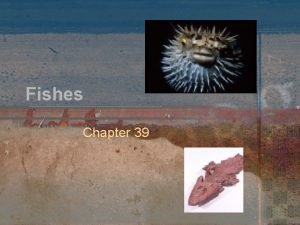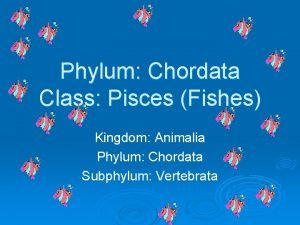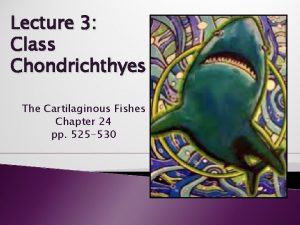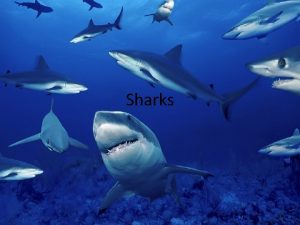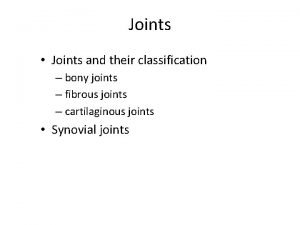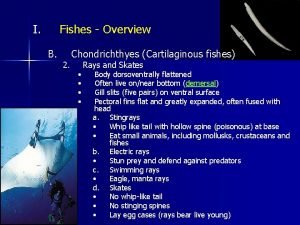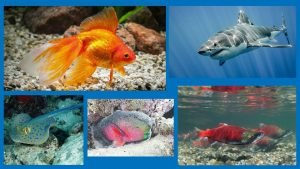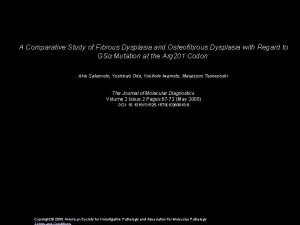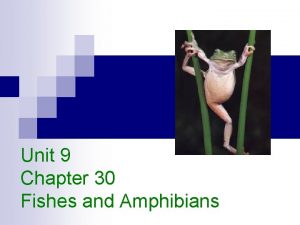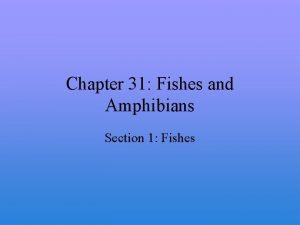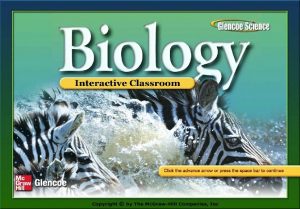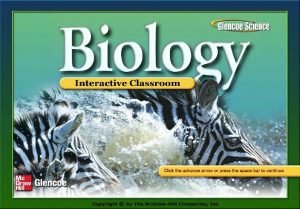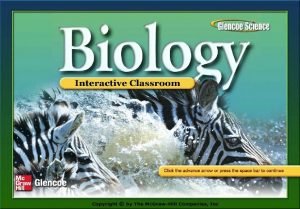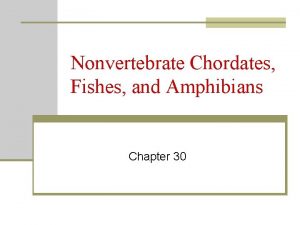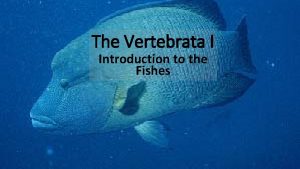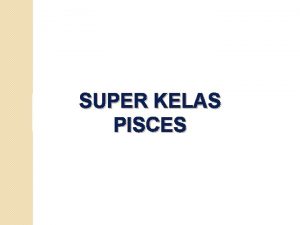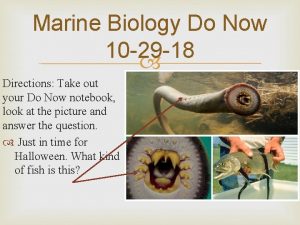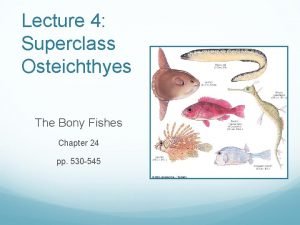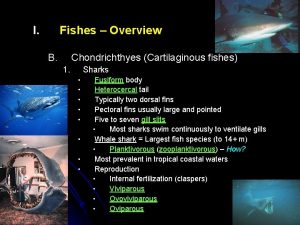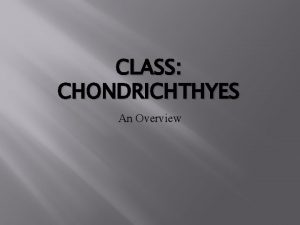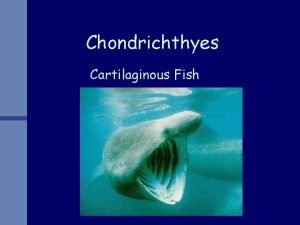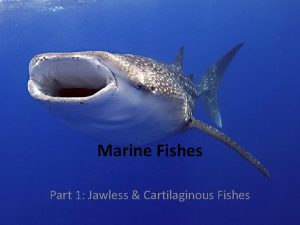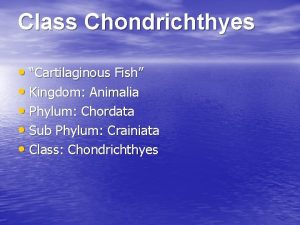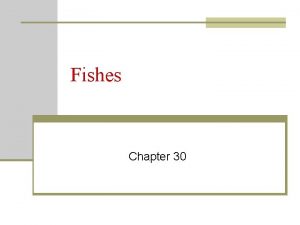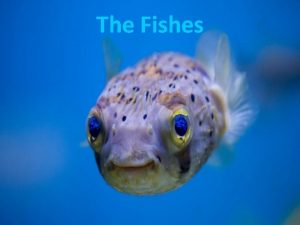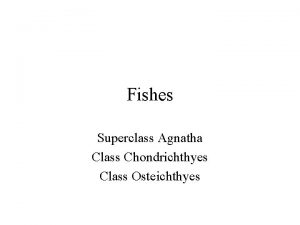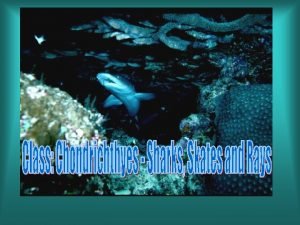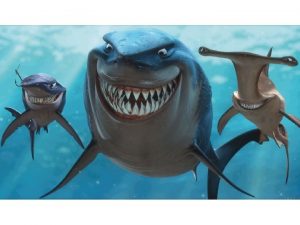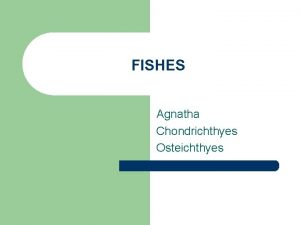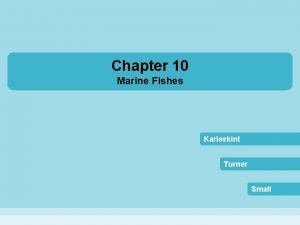Lecture 3 Class Chondrichthyes The Cartilaginous Fishes Chapter





















- Slides: 21

Lecture 3: Class Chondrichthyes The Cartilaginous Fishes Chapter 24 pp. 525 -530

I. Classification A. Subclasses 1. Subclass Elasmobranchii -Sharks, skates, & rays -13 living orders, 937 species (only 28 freshwater) -toothed mouth 2. Subclass Holocephali -Chimaeras -1 order, 33 species -flat plated mouth

B. General Characteristics Body structure Spindle-shaped body (fusiform) Anterior rostrum (nose-like structure) Paired/unpaired fins Cartilaginous skeleton Powerful jaws Tooth-like scales http: //www. bio. gc. ca/sh arks/identity-identiteeng. php

C. Order Characteristics 1. Lamniformes -Marine -Pelagic (open ocean) -Dangerous to humans; great white and mako sharks

C. Order Characteristics 2. Carcharhiniform -Marine -Pelagic (open ocean) -Dangerous to humans -Blueshark, tigershark, hammerhead shark Blue Shark Tiger Shark Hammerhead Shark

C. Order Characteristics 3. Squaliformes -Marine -Pelagic (open ocean) -Dogfish shark (dissection)

C. Order Characteristics 4. Orectolobiformes -Marine -Ocean Bottom -Catsharks & carpet sharks

C. Order Characteristics 5. Rajiformes -Marine -Ocean Bottom -Skates Blue Skate Barndoor Skate

C. Order Characteristics 6. Myliobatiformes -Marine -Ocean Bottom -Rays Manta Ray Spotted-eagle Ray Blue-spotted Ray

II. Body Systems A. Skeletal/Muscular 1. Endoskeleton completely cartilaginous 2. Bundled longitudinal muscles, fin levator/depressors 3. Fins: 2 pectoral & pelvic (modified as clasper in males) 1 -2 dorsal Median caudal Anal (most) 4. Placoid scales arranged to reduce turbulence during swimming

II. Body Systems B. Respiratory/Circulatory 1. Gills -5 -7 pair leading to external gill slits 2. No swimbladder or lung

II. Body Systems B. Respiratory/Circulatory 2. Heart -heart with atrium (blood holder) and ventricle (blood pumper); chambers arranged in tandem -aortic arches around gills -cold-blooded (ecto-thermic)

II. Body Systems C. Nervous -adapted to predatory lifestyle 1. Differentiated brain -optic lobes (sight) -olfactory lobes (smellcan detect chemical in 1 part per billion) -cerebrum -cerebellum -medulla oblongata -semi-circular canals (hearing)

II. Body Systems C. Nervous -adapted to predatory lifestyle 2. Lateral line system (sense vibrations from prey from long distances)

II. Body Systems C. Nervous -adapted to predatory lifestyle 3. Electroreceptors (ampullae of Lorenzini) located on shark’s head guide final attack to prey

II. Body Systems D. Digestive 1. System -Mouth -Pharynx with openings to gill slits and spiracles -Short, wide esophagus -J-shaped stomach -Intestine -Spiral valve slows food -Large liver produces bile to breakdown fat and help with buoyancy

II. Body Systems D. Digestive 2. Specialization -Teeth on upper and lower jaws -Front row of teeth are backed by rows of developing teeth

II. Body Systems E. Excretory/Water Balance -opisthonephridic kidney regulates salt balance -rectal gland secretes fluid with high concentration of salt to assist kidney with salt balance in blood

II. Body Systems F. Reproduction Basics 1. True of Most -Separate sexes -Paired gonads

II. Body Systems F. Reproduction Basics -Reproductive ducts open into cloaca -Internal fertilization

II. Body Systems F. Reproduction Basics 2. Maternal Care of Eggs Varies a. Oviparous: Deposit eggs externally b. Ovoviviparous: Retain eggs in uterus, nourish by yolk c. Viviparous: Young develop inside uterus & are nourished by placenta
 Section 39-2 review jawless and cartilaginous fishes
Section 39-2 review jawless and cartilaginous fishes Cartilaginous fish class
Cartilaginous fish class Characteristics of the class chondrichthyes
Characteristics of the class chondrichthyes Are sharks chordates
Are sharks chordates Type of joint in skull suture
Type of joint in skull suture Bony vs cartilaginous fish
Bony vs cartilaginous fish Anatomy of fish reproductive system
Anatomy of fish reproductive system Secondary cartilaginous
Secondary cartilaginous Bony vs cartilaginous fish
Bony vs cartilaginous fish Primary cartilaginous joint
Primary cartilaginous joint Atypical cartilaginous tumor
Atypical cartilaginous tumor 01:640:244 lecture notes - lecture 15: plat, idah, farad
01:640:244 lecture notes - lecture 15: plat, idah, farad What is amphibia
What is amphibia Chapter 31 fishes and amphibians answer key
Chapter 31 fishes and amphibians answer key Concept mapping chapter 28 fishes and amphibians
Concept mapping chapter 28 fishes and amphibians Amphibia characteristics
Amphibia characteristics Concept mapping chapter 28 fishes and amphibians
Concept mapping chapter 28 fishes and amphibians Non vertebrate chordates
Non vertebrate chordates Lacked
Lacked Struktur tubuh chondrichthyes
Struktur tubuh chondrichthyes Chondrichthyes vs osteichthyes
Chondrichthyes vs osteichthyes Osteichthyes
Osteichthyes
